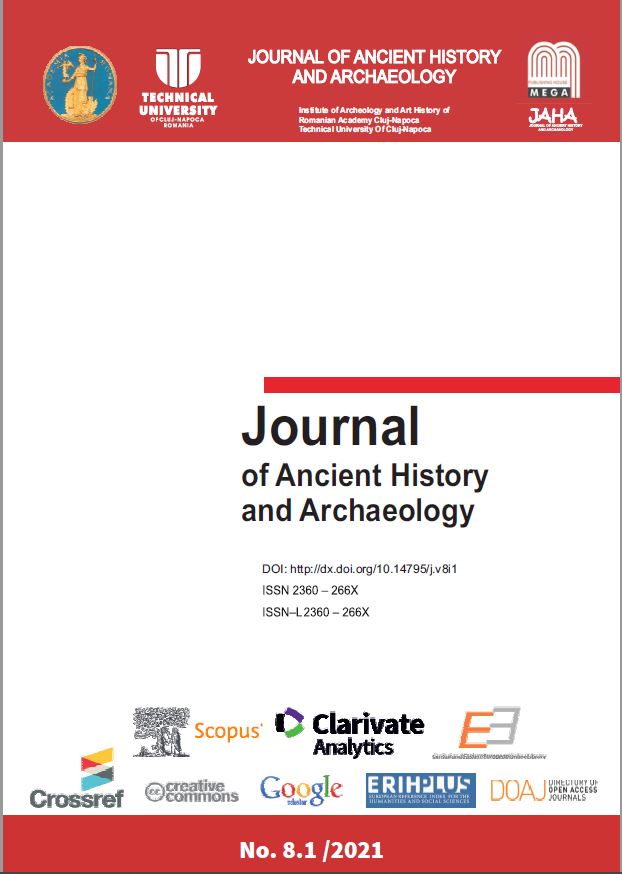THE SARMATIAN MIRROR WITH TAMGAS FROM THE SETTLEMENT OF SEBEȘ - “PODUL PRIPOCULUI” (ALBA COUNTY, ROMANIA): 50 YEARS LATER
THE SARMATIAN MIRROR WITH TAMGAS FROM THE SETTLEMENT OF SEBEȘ - “PODUL PRIPOCULUI” (ALBA COUNTY, ROMANIA): 50 YEARS LATER
Author(s): Vitalie BârcăSubject(s): History, Archaeology
Published by: Editura Mega Print SRL
Keywords: mirrors; tamgas; the Sarmatians; the Carpi; the Free Dacians; Dacia; the north-Pontic area;
Summary/Abstract: The article discusses the mirror discovered in 1967 following the archaeological excavations conducted in the Sebeș - “Podul Pripocului” settlement (Alba county/RO), dated to the 3rd – 4th century AD. The piece, singular in the intra-Carpathian area, belongs to the type of disc mirrors with rectangular side handle and decorated reverse. These are specific mainly to the Sarmatae world, yet are also found in the environment of other cultural identities. Although they emerge in the 1st century AD, they were broadly used in the 2nd century – first half of the 3rd century AD, being rare in the second half of the 3rd century AD.On the Romanian eastern and south-eastern territory, such toiletries appear sometime by mid 2nd century AD, originating especially from graves and features of the second half of the 2nd century – first half of the 3rd century AD, while in only a few cases the dating may also include the first part of the second half of the 3rd century AD. In the case of the specimens from the Romanian territory, these are small, thin in cross-section, exhibiting a slightly marked border on the rim, while the central disc convexity is lacking with most, these being features characteristic to the decorated mirrors of the second half of the 2nd century – first half of the 3rd century AD.The study of the ”Podul Pripocului” exemplar showed that on its reverse there are two identical tamgas set in the mirror, rendered erroneously in their previous publications, which explains the lack of any reported parallels.The author concludes that most close or very close parallels are specific to the region to the right of the Dnieper. As for the dating, these are specific to the period comprised between the second half of the 1st century AD – mid 3rd century AD. It is also noted that in the north-Pontic area, there are many tamgas with components similar to those on the Sebeș - “Podul Pripocului” mirror (in particular the volutes with the inward wavy loops), however these may not be deemed, according to the author, parallels.Owing to its significance, yet especially their function and their borrowing mechanism by the neighbouring populaces, the author concludes that the Sebeș - “Podul Pripocului” mirror did not reach the intra-Carpathian area by trade or exchange.On the basis of the existing finds, it is concluded that currently, it is impossible to say with certainty when the Sebeș - “Podul Pripocului” settlement started or ceased, but also that there was a most certain Barbarian presence, of which further details would be known only subsequent to future archaeological research.Given the role and function of the tamgas on the objects, their distribution manner in other cultural areas and borrowing mechanism by the neighbouring populations, the author concludes it is very likely that among the Barbarians who settled in the “Podul Pripocului” settlement also counted Sarmatians, to whom the presence of this mirror on in the intra-Carpathian area is due.
Journal: Journal of Ancient History and Archaeology
- Issue Year: 8/2021
- Issue No: 1
- Page Range: 87-115
- Page Count: 29
- Language: English

